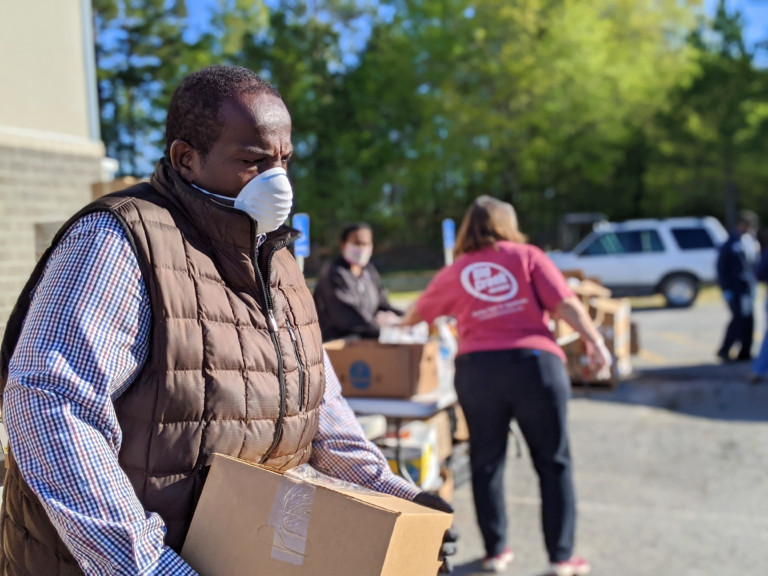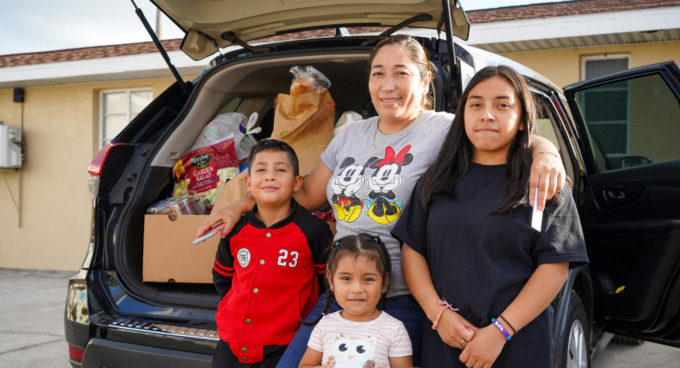
Amid COVID-19, the Feeding America network of 200 food banks and 60,000 pantries and meal programs is already feeling the squeeze of a growing demand for food that can only be described as one thing: unprecedented. As need exponentially escalates, and food donations decline due to the current strain in the food supply chain, food banks are becoming especially worried about dwindling volumes of food to distribute.
In Florida, for instance, long lines of families seeking food assistance have flooded local food banks, creating a situation that is, according to one food banker, “overwhelming the system.” Across the Feeding America network, 95 percent of food banks have reported an increase in demand for food assistance compared to last year, with an average increase of 70 percent. 40 percent of those coming to food banks are newly seeking food assistance.
Fortunately, as food banks continue to do all they can to help our neighbors keep food on the table, they can rely on The Emergency Food Assistance Program (TEFAP) for much-needed support.
Through TEFAP, the United States Department of Agriculture (USDA) purchases healthy food — fruits, vegetables, cereal, pasta, rice, dairy, protein, and other staples — from U.S. growers and producers. Food banks then partner with the USDA and state agencies to connect families in need with the purchased food.
Last year, Feeding America’s food banks were fortunate to have received 1.2 billion pounds of food from the USDA through TEFAP — translating into millions of meals for families. As the scope of the coronavirus crisis becomes clearer, food banks will need TEFAP more than ever to help communities access food.
Critical funding for TEFAP food and costs has already been provided by the Families First Coronavirus Response Act and the Coronavirus Aid, Relief, and Economic Security (CARES) Act. However, more needs to be done, as almost half of Feeding America’s food banks anticipate that they will exhaust their TEFAP inventory in the coming weeks.
Food banks need more TEFAP support, and they need it quick. Congress and the administration have opportunities to make that happen.
First, food banks need more TEFAP foods. An additional $500 million for future food needs would go a long way to ensure food banks have enough resources to avoid turning away families who have waited in long lines for food assistance. Secondly, food banks need more TEFAP funding. Innovating and pivoting toward no-touch distribution models is costly; an investment of $500 million in TEFAP storage and distribution funding will help food banks shoulder these new expenses. As food banks work to meet the enormous task of feeding communities during a pandemic, TEFAP is a critical lifeline that can be strengthened by our lawmakers.



